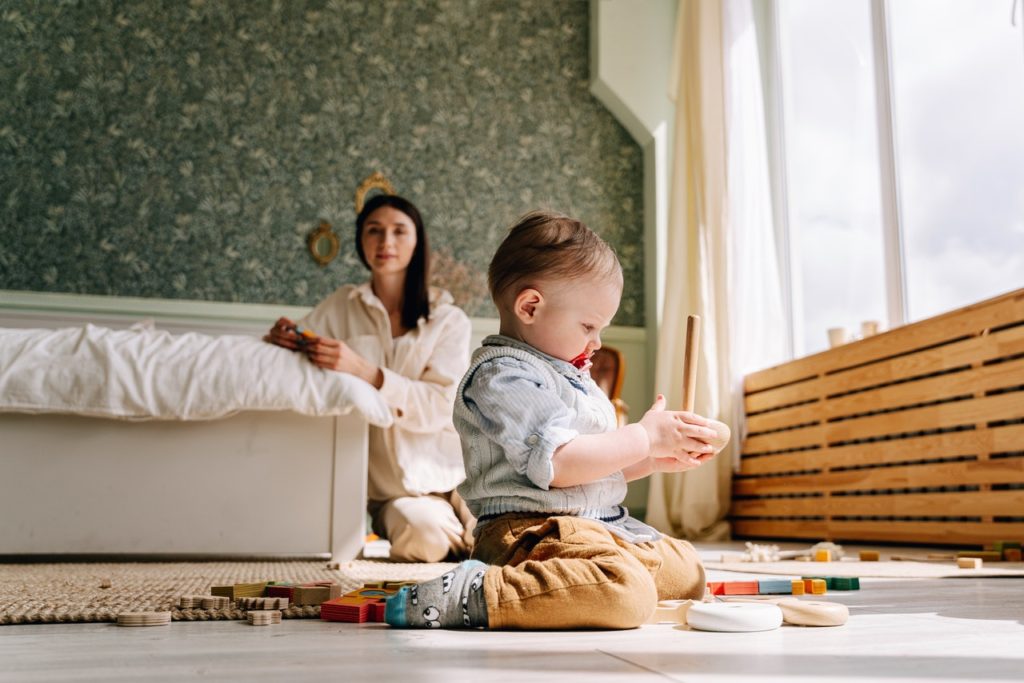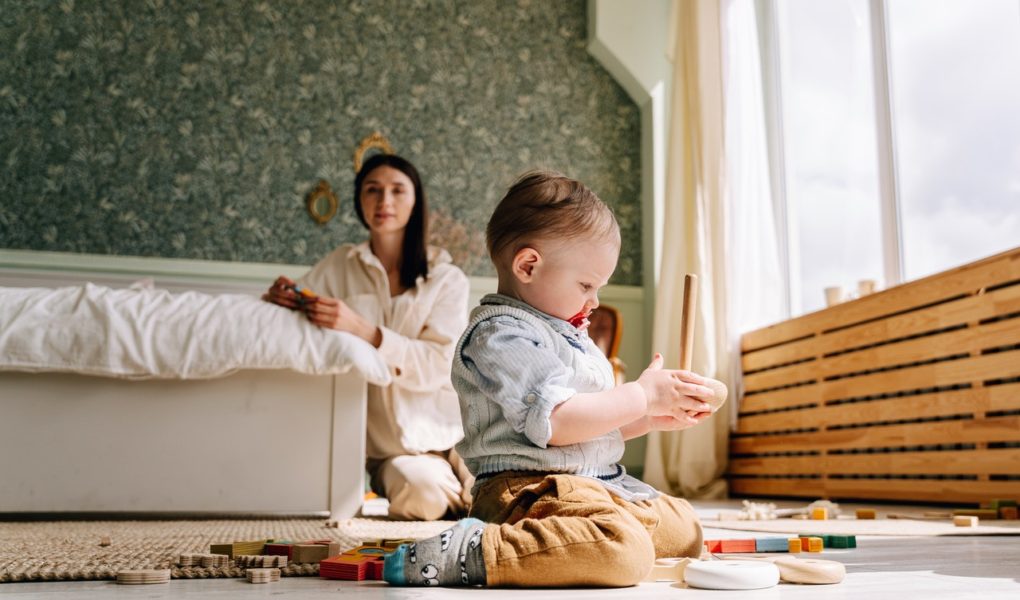Guest Post By Myrtle Bautista on How to Create a Comfortable Sustainable Childcare.
Have you ever thought about sustainable childcare? Ever been conscientious about the environment around us?
More and more parents today are becoming conscientious about the environment and its impact on it.
As climate change awareness grows, people are more conscientious of the choices they make. They want to raise children who care about the world around them and are looking for ways to do that without compromising their lifestyle, values, or beliefs.
In this article, we lay out what sustainable childcare means and how you can make the changes necessary to make your home more eco-friendly without sacrificing your child’s comfort.
Table of Contents
How to Make Sustainable Childcare Happen in Your Home

There are a few basic things you can do to make your home more sustainable and child-friendly at the same time:
Decorate with natural materials–
Whenever possible, choose furniture, rugs, and decorations made from natural materials like wood, cotton, and wool. Not only are they more environmentally friendly, but they also tend to be more comfortable and cozy for children.
Use energy-efficient appliances–
Appliances that use less energy not only save you money in the long run but also help reduce your home’s carbon footprint.
Create a green space–
A small garden or even a few potted plants can provide a child with a natural place to play and explore. Gardening is also a great way to teach kids about the environment and how they can help care for it.
Choose sustainable options whenever possible–
Most moms believe that sustainable options like organic food and eco-friendly products are more expensive. They don’t have to be! If you plan on buying baby clothes, for example, watch out for sales and use a coupon to get the best deal. Another easy sustainable option you can consider is breastfeeding instead of relying on baby formula—it’s not only healthier but also more environmentally sustainable.
Educate your child about sustainability–
Teaching your child about sustainability is a great way to help them understand how they can help protect the environment. Start with simple things like turning off the lights when they’re not in use, or recycling paper and plastics.
Excellent activities to help your child learn about the environment and how to take care of it are:
- Make recycling a habit– Have designated bins for recyclable materials, trash and food scraps. The bins can be colour-coded.
- Start a garden– Make gardening part of the daily and weekly routine. The whole gardening process can be taught starting with indoor seed planting and culminating with harvesting fruits and vegetables.
- Use recyclable items for craft time– Get creative with recyclable materials like empty boxes, cans, and bottles. Have an exciting craft time & let your child’s imagination run wild!
- Make compost– Composting is a great way to reduce your home’s waste and teach kids about the environment. Start with an indoor compost bin or get a bigger bin for your backyard.
Creating Cozy, Comfy, and Cuddly Spaces for Children to Learn
Aside from sustainability, it’s also important to make sure the space your child is learning and playing in is comfortable.
A childcare environment requires four things to spur learning: movement, comfort, competence, and control.
Let’s take a closer look at each.
Movement
One way to encourage movement is to provide a designated outdoor play space as well as plenty of room indoors for the children to move around. If you have no outdoor spaces to use, consider an easy-to-clean play kit that can be set up indoors.
To prevent accidents, ensure that there are plenty of soft spaces for children to fall and that all play areas are age-appropriate. Some measures you can look into are:
- Rugs
- Carpets
- Throw pillows
- Bean bags
- Rubber mats
- Foam pillows
- Stuffed animals
These items can provide a soft landing for children who are running and jumping as well as a comfortable place to rest when they need a break from the action.
Try to go for items that use natural fibres and are easy to sterilize daily as spills and accidents are bound to happen.
Comfort
Providing just the right level of stimulation is essential for a comfortable learning environment, but it can be tricky to find the right balance. Too little stimulation and children may become bored, while too much can lead to over-stimulation.
The type of furniture you choose is also important for comfort. Look for soft, comfortable materials such as cotton or wool. Natural fibres breathe better than synthetics and can help keep children cool in the summer and warm in the winter.
Competence
To teach independence and encourage exploration, children need access to a variety of materials and activities. This can be achieved by providing an assortment of open spaces as well as centres where children can focus on a specific activity.
Children build competence by trying new things and making mistakes. Providing a variety of activities allows each child to find the ones they enjoy and helps them learn at their own pace.
Teach children how to use materials in an environment and let them take control. This will help foster a sense of independence as well as a sense of responsibility.
Control
Learning to control their environment is an important step in a child’s development. By providing designated “quiet areas” or allowing children to take breaks as needed, you can help them feel in control of their environment.
This can be essential for children who are sensitive to noise or who are feeling overwhelmed. Designating a space for quiet time can also help children regulate their emotions and calm down.
These areas can also serve as breastfeeding zones, nap spaces, or simply a place for children to go when they need some time alone.
When creating a sustainable childcare environment, it’s important to consider each of these four essential components. With a little creativity, you can create an environment that is comfortable, stimulating, and safe for your charges while being mindful of the environment. By using natural materials, providing a variety of activities, and designing your childcare space with movement, comfort, competence, and control in mind, you can create a sustainable childcare experience that is cozy, comfy, and cuddly for your children!
So that was about sustainable childcare. You might also enjoy learning more about sustainable laundry in my post here or about sustainable gifts in another post here.

About Myrtle Bautista
Myrtle is a journalism major, and a social media marketer and is now exploring freelance writing. She’s fond of anything related to health and wellness, and when she’s not writing, you’ll find her doing long-distance cycling, ultramarathons, hiking, or in a local cafe enjoying a good cold brew.
This post contains affiliate links to various products and if you buy anything by clicking those links, I earn from qualifying purchases at no extra cost to you. To find out more, you can read my disclaimer here





These are great suggestions for a sustainable home and childcare! We especially love crafting with recyclable and upcycled things too 🙂
I am glad you liked the suggestions, Alison. That’s fab. Thanks for your feedback.
Great post, it touches a little on how we set up classrooms here in Ontario for our kindergarten students.
That is absolutely fabulous. We do need to think in terms of sustainable childcare as we think in terms of the environment around ourselves. Thanks for your feedback.
Fab suggestions! I think educating children about being sustainable early on is really important to start developing those habits for later in life. It’s super important to let them make mistakes when developing their competency too! Thanks for sharing.
Yes, I absolutely understand. It is about time we incorporate sustainable living in our schools as well. Thanks for your feedback.
Love these tips! I think it is so important to educate children when they are young about sustainability. These will be the people taking care of our planet after we are gone!
Thank you so much Grace for your feedback.
Some great tips here, Rupali! I will keep them in mind for when I’ll have babies one day x
Thanks, Simona for reading & commenting.
I think anyone who is a parent and wants to focus on sustainability will love this; so many great tips!
Thanks Molly
Great ideas! I especially love the idea of planting a garden with your children. It’s important to teach the next generation sustainability.
Thank you so much Heidi